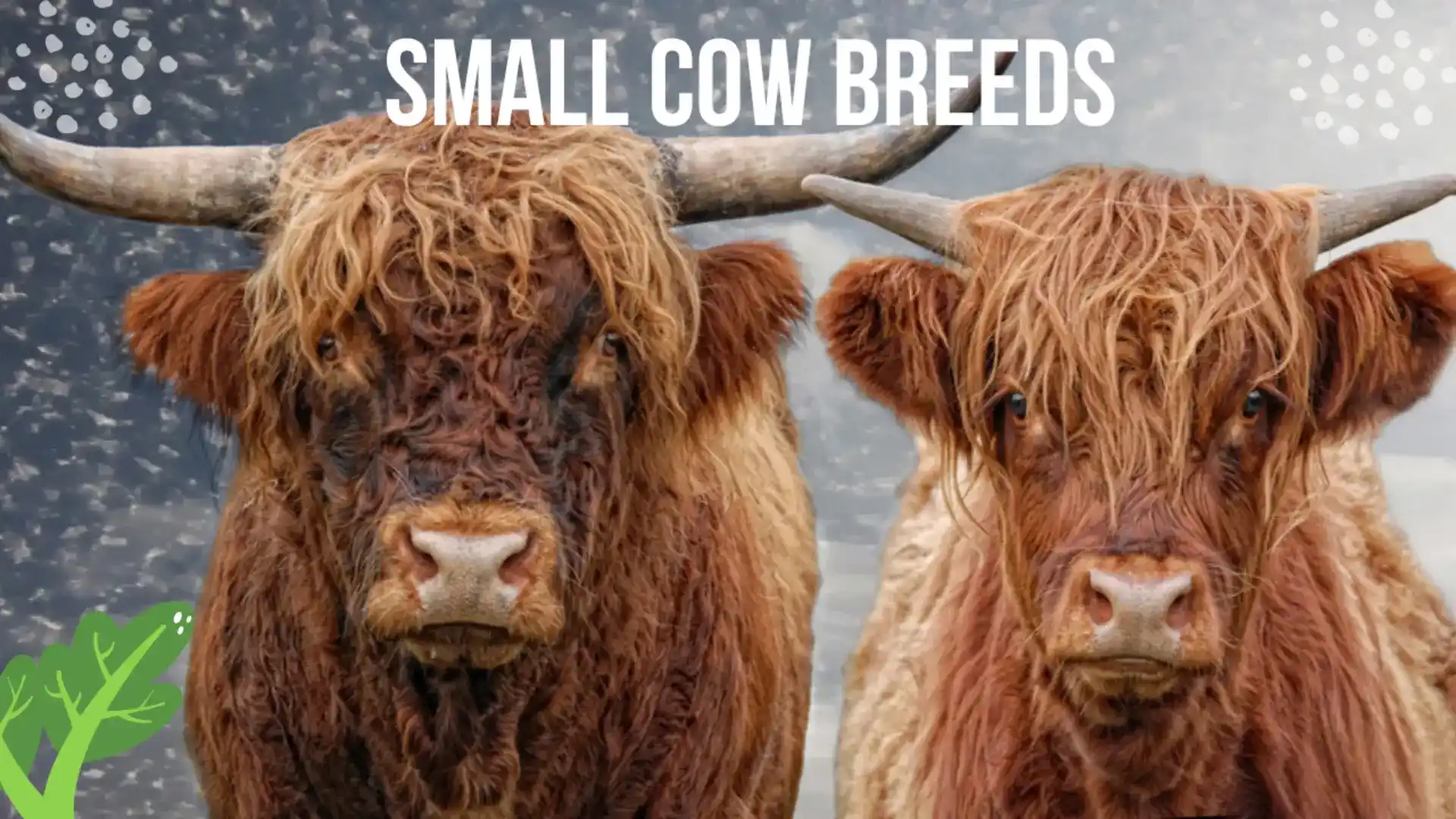Small Cow Breeds | The Perfect Solution For Limited Space
Miniature cattle breed is getting popularity now a days especially those who are small landowners and want to get maximum yield.Small cow breed have advantages on full size cow as these require less pasture,adorable and deliver same quality output.
Some people give them preference due to fresh dairy products and other due to meat as meat and milk quality is same as pure breed.
Let’s delve into the world of mini cow breeds and explore considerations such as housing, pasture management, nutrition, and veterinary care, along with exploring the costs associated with these delightful miniature bovines.
What Is Mini Cow?
I’ve always been fascinated by mini cows, also known as miniature cattle. These adorable animals are smaller in size compared to traditional cattle breeds, making them perfect for small farms or as pets. I’ve had the pleasure of interacting with fluffy teacup mini highland cow, and I can attest to their gentle nature and manageable size.
They require less space and feed, making them an ideal choice for individuals with limited resources. Despite their small stature, they still provide milk and meat, making them a practical and charming addition to any farm.
Mini cow VS Standard Cow:
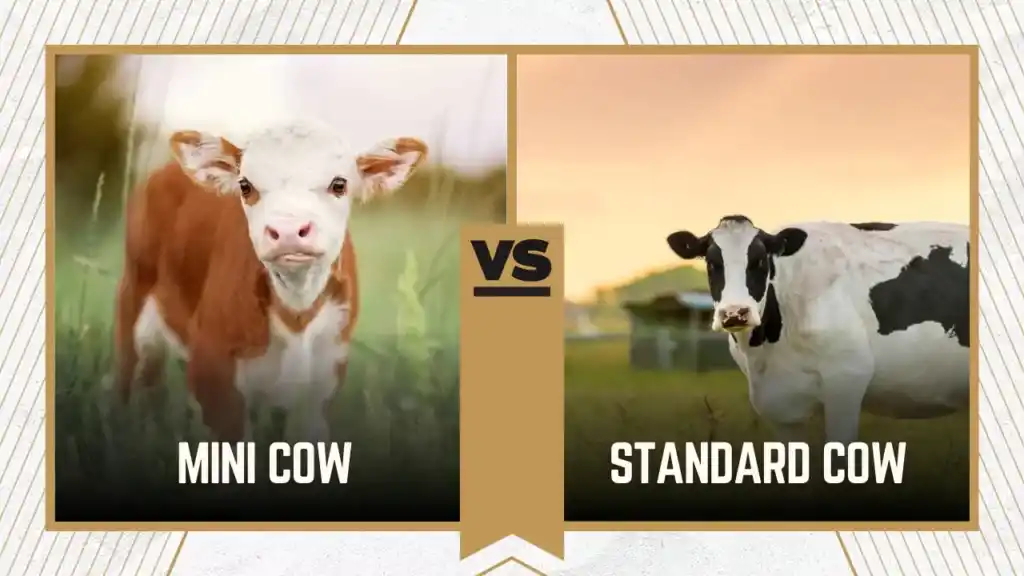
| Specifications | Mini cow | Standard Cow |
| Cost | Price of these cows are $1500 to $6000 depending on age, conformation, and seller. | Mid and standard cow ranges are about $900 to $3000 depending on age, conformation, and seller. |
| Size and weight | These are about 36-42″ tall and 550 to 700 pounds | About 48″-62″ tall and 700 to 900 pounds |
| Milk Production | Mini cows produce average 1 to 4 gallons/day | standard cows produce average 4 to 8 gallons/day |
| Fencing and Pasture Space | Approx 1/2 to 1 acre is sufficient. | About 1 to 2 acre of grass for a standard sized cow |
How Big Do Mini Cow Really Get?
As someone who has had the opportunity to interact with miniature cows, I can confidently say that their size varies depending on the specific breed. Breeds of mini cow like the Dexter, Miniature Zebu, and Highland are known for their compact stature.
Generally, mini long hair cows can grow up to a height of around 3.5 to 4 feet at the shoulder and weigh between 500 to 1,000 pounds. However, it’s essential to remember that individual growth rates and sizes can differ based on factors like genetics, nutrition, and overall health.
Small Cow Breeds Care Essentials
Know that taking care of miniature cattle requires a comprehensive understanding of their nutrition, housing, pasture management, and veterinary care. As someone who has experience in this field, I can provide you with essential information on these aspects.
Nutrition
- Diet Composition: Miniature cattle primarily consume hay, grass, and grains. Ensure their diet consists of a proper balance of roughage, protein, vitamins, and minerals.
- Water: Provide clean, fresh water at all times. This is crucial for their overall health and well-being.
- Feeding Frequency: Miniature cattle should be fed twice a day, with the amount depending on their age, size, and activity level.
- Monitoring Health: Keep an eye on their body condition and weight to ensure they are receiving adequate nutrition.
Housing
- Shelter: Provide a well-ventilated, dry, and comfortable shelter to protect them from extreme weather conditions, predators, and parasites.
- Space: Ensure there is enough space for them to move around, lie down, and socialize.
- Cleanliness: Regularly clean and maintain their living area to prevent the spread of diseases and maintain a hygienic environment.
Pasture Management
- Grazing Management: Rotate pastures to allow for proper regrowth and prevent overgrazing. This also helps in maintaining the quality of the grass they consume.
- Fencing: Install strong fences to keep your miniature cattle within the designated area and protect them from potential dangers.
- Pasture Maintenance: Regularly inspect the pasture for any hazards, such as sharp objects or poisonous plants, and address them promptly.
Veterinary Care
- Regular Check-ups: Schedule routine health check-ups with a veterinarian experienced in treating miniature cattle.
- Vaccinations: Administer recommended vaccinations to protect them from common diseases.
- Parasite Control: Implement a parasite control program to prevent and treat internal and external parasites.
- Emergency Preparedness: Be prepared for potential emergencies by having necessary supplies and knowing how to contact a veterinarian 24/7.
Top 5 Miniature Cattle Breeds You should need to know.
All around the word about 250 cattle breed are recognized.From these around 80 breed are Common in US.Most of these are very common like Black Angus or Barhman but here we will discuss some unique types of brees
Dexter Cattle
I have had personal experience with Dexter cattle, and I can attest to their hardiness and adaptability. They are one of the smallest breeds of cattle, standing at an average height of 3.5 to 4 feet tall. Dexters are known for their docile nature, making them easy to handle. They are dual-purpose animals, meaning they can be used for both meat and dairy production. Dexter cows are excellent milkers, producing around 1,500 to 2,000 pounds of milk per lactation. Their small size also makes them suitable for small-scale farms or homesteads.
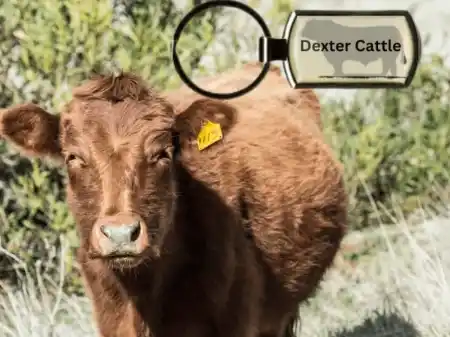
Lowline Angus
Lowline Angus are miniature versions of the popular Angus breed. They are compact, standing at an average height of 42 to 48 inches tall. These cattle are well-suited for small farms and hobbyists due to their manageable size and gentle temperament. Lowline Angus are primarily raised for beef production, and they have excellent marbling and tenderness, making their meat highly sought after. Additionally, they are known for their easy calving and good maternal instincts.
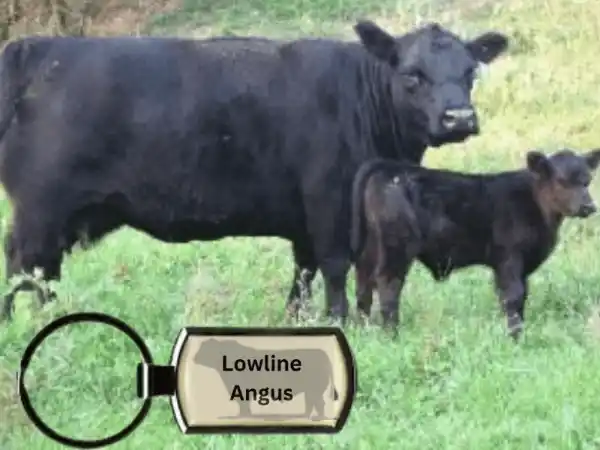
Miniature Hereford
Miniature Herefords are smaller versions of the standard Hereford breed, with an average height of 42 to 48 inches. They are known for their hardiness, adaptability, and docile nature. These cattle are primarily raised for beef production, and their meat is known for its excellent flavor and tenderness. Miniature Herefords are also well-suited for small-scale farms and homesteads due to their manageable size and ease of handling.

Miniature Zebu
Miniature Zebu, also known as Miniature Indian Cattle, are a smaller version of the Zebu breed, which is native to India. They are known for their heat tolerance, making them suitable for warmer climates. Miniature Zebu are dual-purpose animals, used for both meat and dairy production. They are also known for their hardiness and adaptability, making them well-suited for small-scale farms and homesteads.e
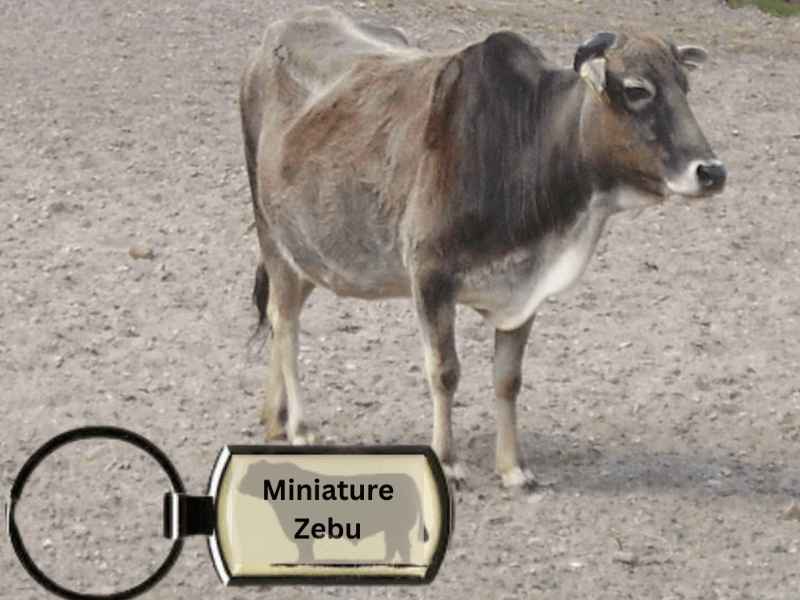
Miniature Jersey
Miniature Jerseys are smaller versions of the popular Jersey breed, known for their milk production. These cattle are compact, standing at an average height of 42 to 48 inches. Miniature Jerseys are primarily raised for dairy production, and they are excellent milkers, producing high-quality milk with a high butterfat content. Their small size makes them suitable for small-scale farms and homesteads, and their gentle temperament makes them easy to handle.

Miniature Cattle Care Essentials
In terms of benefits, raising miniature cattle can be a rewarding and practical choice for many reasons. As someone who has personally experienced the joys of owning these adorable creatures, I can attest to their numerous advantages.
Space Efficiency
Miniature cattle require significantly less space compared to their full-sized counterparts. This makes them an ideal choice for small farms, hobby farms, or even backyard homesteads where space is limited. They can comfortably graze on smaller pastures and still thrive.
Lower Feed Costs
Due to their smaller size, miniature cattle consume less feed, which translates to lower costs for the owner. This is particularly beneficial for those who raise cattle primarily for meat production or as a source of milk.
Easier Handling
Miniature cattle are generally more manageable and easier to handle than larger breeds. Their smaller size makes them less intimidating, and they are generally calmer and more docile. This makes tasks such as vaccinations, deworming, and general care much simpler and less stressful for both the owner and the animal.
Gentle Temperament
Many miniature cattle breeds are known for their gentle and friendly nature, making them excellent choices for families with children or those who want to interact with their animals on a personal level. This also makes them suitable for educational purposes, such as farm visits or school programs.
Multipurpose Usage
Miniature cattle can serve various purposes, including meat production, dairy, and even as ornamental animals for display at fairs or exhibitions. Their smaller size doesn’t limit their usefulness, and they can adapt to different roles on a farm or homestead.

The Challenges And Costs Of Miniature Cattle Ownership
Other than the benefits, owning miniature cattle comes with its fair share of challenges and costs. As someone who has had personal experience with these adorable creatures, I can attest to the fact that they require a lot of attention, time, and resources.
Challenges
Space Requirements
Miniature cattle, despite their smaller size, still need ample space to roam and graze. They require a proper shelter, fencing, and pasture for them to live comfortably. This can be a significant challenge for those with limited land or urban settings.
Daily Care and Maintenance
These animals need daily care, including feeding, watering, and cleaning their living area. They are also susceptible to various health issues, which may require regular veterinary check-ups and treatments.
Social Interaction
Miniature cattle are social animals and thrive in groups. Isolating them can lead to stress and behavioral issues. Ensuring they have companionship can be a challenge, especially if you have limited space or resources.
Training and Handling
Training miniature cattle to be comfortable around humans and follow basic commands can be a time-consuming process. It requires patience, consistency, and dedication.
Costs
Initial Costs
The initial cost of purchasing a miniature cattle can vary depending on the breed, age, and gender. You may also need to invest in proper shelter, fencing, and pasture setup.
Ongoing Expenses
Miniature cattle require a steady supply of food, which can be costly, especially if you opt for high-quality feed. They also need regular veterinary care, including vaccinations, deworming, and treatments for any health issues.
Time and Labor
Owning miniature cattle is a time-consuming endeavor. You’ll need to dedicate time daily for feeding, watering, cleaning, and monitoring their health. This can be particularly challenging for those with busy schedules or limited availability.
Equipment and Supplies
Over time, you’ll need to replace or repair various equipment and supplies, such as fencing, water troughs, and feeding containers. These costs can add up over time.
Dairy Production And Miniature Cattle
In my experience, dairy production with miniature cattle has been a fascinating endeavor. The smaller size of miniature cattle makes them easier to handle and requires less space, making them suitable for small farms or homesteads.
Despite their smaller stature, miniature cattle can still produce a significant amount of milk, making them a viable option for dairy production. Their docile nature and efficient feed conversion also make them an attractive choice for those looking to venture into dairy farming on a smaller scale. Additionally, their adaptability to various climates and their lower environmental impact further contribute to their appeal in the dairy industry.
Meat Production And Miniature Cattle
Meat production and miniature cattle are two interconnected aspects of the livestock industry. As a farmer, I have found that the demand for meat continues to rise, leading to a greater focus on efficient and sustainable meat production.
Miniature cattle have become increasingly popular due to their smaller size, which requires less space and resources compared to traditional cattle breeds. This has led to a growing interest in raising miniature cattle for meat production, as they offer a more manageable and cost-effective option for farmers while still contributing to the meat supply.
How To Choose The Right Miniature Cattle Breed For Your Needs?
When it comes to choosing the right types of miniature cattle breed for your needs, there are several important factors to consider. Here are some key aspects to keep in mind:

Consider Your Purpose
First and foremost, it’s essential to consider your purpose for raising miniature cattle. Are you looking for a breed that is suitable for meat production, milk production, or simply as a pet or hobby animal? Understanding your primary goal will help you narrow down your options and choose a breed that aligns with your specific needs.
Evaluate Available Space
The amount of space available on your property will also play a significant role in determining the right miniature cattle breed for you. Some breeds are better suited for smaller acreage, while others may require more room to roam. Consider the size of your pasture and facilities to ensure that the chosen breed can thrive in your environment.
Climate Considerations
Different miniature cattle breeds have varying levels of tolerance to different climates. If you live in an area with extreme temperatures or harsh weather conditions, it’s crucial to select a breed that can adapt and thrive in such an environment. Be sure to research the climate preferences of each breed before making a decision.
Temperament and Handling
The temperament of the cattle breed is another important consideration, especially if you plan to interact with them regularly. Some breeds are known for being docile and easy to handle, making them suitable for beginners or those with limited experience in handling cattle. On the other hand, some breeds may be more high-strung and require more experienced handlers.
Health and Maintenance
Consider the health and maintenance requirements of each miniature cattle breed. Some breeds may be more susceptible to certain health issues, while others may have specific grooming or maintenance needs. Understanding these aspects will help you make an informed choice based on your ability to provide proper care for the animals.
Where To Find And Purchase Miniature Cattle?
I have always been fascinated by miniature cattle and have spent a lot of time researching where to find and purchase them. Here are some of the best places I have found to acquire these unique animals.
Local Livestock Auctions and Sales
One of the most traditional ways to find and purchase miniature cattle is by attending local livestock auctions and sales. These events often feature a wide variety of livestock, including miniature cattle. It’s a great way to see the animals in person and talk to breeders and sellers directly.
Online Marketplaces
In today’s digital age, online marketplaces have become an increasingly popular way to find and purchase miniature cattle. Websites such as Craigslist, Hoobly, and Livestock Of America often have listings for miniature cattle for sale. Additionally, there are specialized websites and forums dedicated to livestock where you can find reputable breeders and sellers.
Miniature Cattle Breeders
Another excellent option is to directly contact miniature cattle breeders. Many breeders have websites or social media pages where they showcase their available animals. By reaching out to these breeders, you can inquire about the availability of miniature cattle and potentially arrange a visit to their farm to see the animals in person.
Livestock Associations and Shows
Livestock associations and shows are also great places to find and purchase miniature cattle. These events bring together breeders, sellers, and enthusiasts from across the country, providing an excellent opportunity to network and find reputable sources for miniature cattle.
Local Farms and Ranches
Visiting local farms and ranches that specialize in raising miniature cattle can be a rewarding experience. Not only can you see the animals up close, but you can also learn more about their care and maintenance from experienced farmers.
Breed Name | Highland Cattle, Bos taurus |
|---|---|
| Place of Origin | Scotland |
| Uses | Meat, showing |
| Bull (Male) Size | 800 kg, 3.5 – 4 ft |
| Cow (Female) Size | 600 kg, 3 – 3.5 ft |
| Color | Black, dun, red, ginger, yellow, white, gray, and silver |
| Lifespan | 20 years |
| Climate Tolerance | Hardy, can withstand intemperate conditions |
| Care Level | Beginner to intermediate |
| Production | Meat |
Conclusion:
Small cow breeds are indeed the perfect solution for limited space. Their compact size, efficient feed conversion, and manageable requirements make them ideal for small farms and homesteads. These breeds offer a sustainable and practical way to produce milk, meat, and other bovine products while maximizing limited space. With proper care and management, small beef cow breeds, small dairy cow breeds and even small black cow breeds can thrive in smaller environments, providing valuable resources for their owners.

